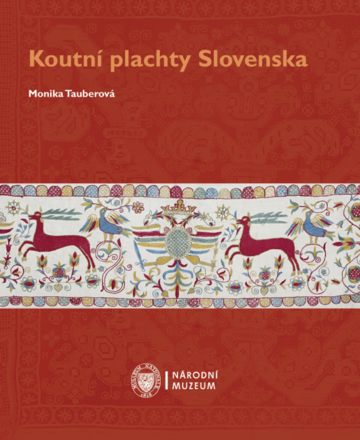
Koutní plachty Slovenska
ISBN: 978-80-7036-536-6
Author(s): Monika Tauberová
Publisher: National Museum
Place of publication: Prague
Number of pages: 142
Citation: TAUBEROVÁ, Monika. Koutní plachty Slovenska. Vydání první. Prague: National Museum, 2017. 142 stran. ISBN 978-80-7036-536-6.
This publication focuses on the phenomenon of corner curtains in Slovakia between the 1700s and the 1930s. In the traditional folk culture, corner curtains were connected with childbirth. The moment of birth, the start of a baby’s life, represents a key moment in our human lifetime, and has been traditionally associated with many customs and rituals, connected with the family cycle. The status of a pregnant woman was defined by cultural traditions. Women had to respect many bans and instructions during the entire pregnancy, of which the predominant aim was to ensure the successful delivery of a healthy baby. Corner curtains bore symbolic meanings preserved in the form of rich embroidery and lace. They were created by professional and amateur embroideresses mostly from the rural surroundings. Corner curtains also held a cultural and anthropological message. They constitute a bridge connecting us to our ancestors, and what makes them even more precious is the fact that they are purely female artifacts from a period when a woman’s stature was greatly diminished.
